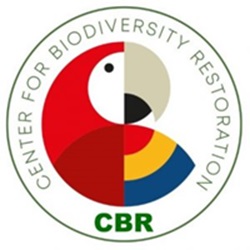BIRD WATCHING AT MACAW LODGE
COSTA RICA , FRIDAY, FEBRUARY 15, 2019 Text and photos: Hugo Santa Cruz
He is regularly the first to wake up, his singing encourages all of us to stand up. It is still dark but the Tinamú Grande (Great Tinamou) is already singing, while a couple of hundred more species start to flap their wings, soon to sing different songs – some very sophisticated, standing out from the rest. Macaw Lodge’s gardens fill the landscape with color and provide shelter and food for hundreds of animal species.

As I get ready for the day, I mentally identify and count the different sounds I hear – trying to imitate some of them with little success – while I brush my teeth I go through the 13 identified species and 2 or 3 without being able to recognize them.
Bird recognition by songs and calls are essential for their count.

![cbpl-logo-3[1]](https://c4br.org/wp-content/uploads/elementor/thumbs/cbpl-logo-31-qiwqbfwjaa8ydzluyxar06b8ff92ldef5pe5jzcxvi.jpg)
